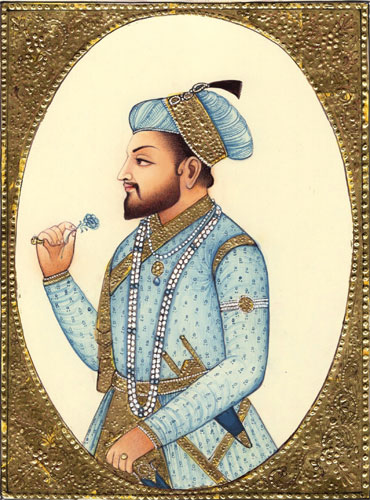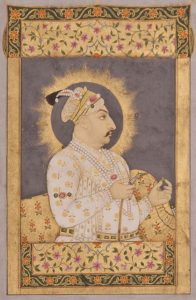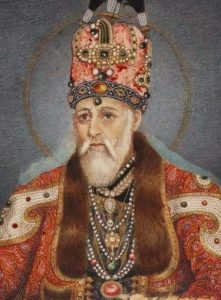Explore the Mughal Emperors List, their names, and reign period, tracing the empire from Babur to Bahadur Shah II. This guide highlights their contributions to politics, culture, art, and architecture, showcasing the enduring legacy of the Mughal dynasty in India’s history.

The Mughal Empire, spanning over three centuries from 1526 to 1857, stands as a testament to the grandeur, cultural fusion, and architectural marvels of the Indian subcontinent. From its humble beginnings to its zenith, the Mughal Emperors left an indelible mark on the region’s history, art, and architecture. Their rule not only witnessed significant political and economic developments but also led to a flourishing of arts, literature, and religious harmony. Let us embark on a journey to explore the splendor of the Mughal Empire and its enduring legacy.
The Mughal Empire, which spanned from the early 16th century to the mid-19th century, is often regarded as one of the most powerful and influential dynasties in Indian history. The Mughal emperors played a significant role in shaping the political, cultural, and architectural landscape of the Indian subcontinent. From Babur to Bahadur Shah II, each ruler left an indelible mark on the history of the region. Let’s explore the list of Mughal emperors and their contributions.
The Mughal Empire was one of the most influential and powerful empires in India, spanning over three centuries. Below is a chronological table of the Great Mughals and their key contributions during their reigns.
| Emperor | Reign Period | Key Information |
|---|---|---|
| Babur | 1526–1530 | Founder of the Mughal Empire; defeated Ibrahim Lodi in the First Battle of Panipat. |
| Humayun | 1530–1540, 1555–1556 | Lost the empire to Sher Shah Suri; regained it with Persian assistance. |
| Akbar the Great | 1556–1605 | Expanded the empire, established an efficient administration, and promoted religious tolerance. |
| Jahangir | 1605–1627 | Known for patronizing art and architecture; faced conflicts with the British East India Company. |
| Shah Jahan | 1628–1658 | Built the Taj Mahal; expanded the empire but strained resources with his extravagant projects. |
| Aurangzeb | 1658–1707 | Expanded the empire to its largest extent; faced internal rebellions due to orthodox policies. |
| Bahadur Shah I (Shah Alam I) | 1707–1712 | Released Shahuji (son of Shivaji); his reign marked the beginning of the empire’s decline. |
| Jahandar Shah | 1712–1713 | Known for his incompetence and titular role; unpopular among his subjects. |
| Furrukhsiyar | 1713–1719 | Influenced by the Syed Brothers; granted duty-free trading rights to the British East India Company. |
| Rafi Ul-Darjat | 1719 | Proclaimed emperor by the Syed Brothers but ruled for a very brief period. |
| Rafi Ud-Daulat | 1719 | Briefly succeeded Rafi Ul-Darjat but had minimal impact during his short reign. |
| Muhammad Ibrahim | 1720 | Claimed the throne with support from the Syed Brothers but was unsuccessful in deposing Muhammad Shah. |
| Muhammad Shah (Rangeela) | 1719–1720, 1720–1748 | Removed the Syed Brothers; lost territories to the Marathas; faced the invasion of Nadir Shah in 1739. |
| Ahmad Shah Bahadur | 1748–1754 | Son of Muhammad Shah; defeated by the Maratha Confederacy and weakened the empire further. |
| Alamgir II | 1754–1759 | Murdered by a conspiracy involving Imad-Ul-Mulk and Sadashivrao Bhau of the Marathas. |
| Shah Jahan III | 1759–1760 | Overthrown after the Third Battle of Panipat by Prince Mirza Jawan Bakht. |
| Shah Alam II | 1760–1806 | Fought against the British East India Company in the Battle of Buxar; reformed the Mughal Army. |
| Akbar Shah II | 1806–1837 | Stripped of imperial authority by the British; his name was removed from official coinage. |
| Bahadur Shah II (Bahadur Shah Zafar) | 1837–1857 | The last Mughal emperor; led the Indian Rebellion of 1857 and was exiled to Rangoon by the British. |
The “Later Mughals” is a term used to refer to the Mughal emperors who ruled India after the death of Aurangzeb in 1707 until the decline of the Mughal Empire. Here is a list of the Later Mughals or Later Mughal emperors who ruled over the Mughal Empire in chronological order:
Babur, a descendant of both Genghis Khan and Timur, laid the foundation of the Mughal Empire in India. He defeated Ibrahim Lodi, the last ruler of the Delhi Sultanate, in the First Battle of Panipat in 1526. Babur’s reign witnessed the establishment of a strong central authority, and he is known for his memoir, the Baburnama, which provides valuable insights into his life and times.

Mughal Emperor Zahir-ud-din Muhammad Babur
Humayun, Babur’s son, faced several challenges during his reign, including the temporary loss of his empire to Sher Shah Suri. However, he managed to regain power and is credited with introducing Persian art and culture to the Mughal court. Humayun’s reign marked the beginning of a fusion of Indian and Central Asian influences in Mughal architecture.

Akbar, one of the greatest Mughal emperors, ascended to the throne at the age of 13. Under his visionary leadership, the Mughal Empire reached its zenith. Akbar implemented policies of religious tolerance, abolished discriminatory taxes, and introduced a centralized administrative system. His court was a hub of art, culture, and intellectual pursuits, attracting scholars and artists from different parts of the world.

Jahangir, the son of Akbar, continued his father’s policies of religious tolerance and patronage of the arts. He expanded the empire and maintained peaceful relations with neighboring kingdoms. Jahangir’s reign saw the flourishing of Mughal painting, with his court becoming a center of artistic excellence.

Shah Jahan is remembered for his grand architectural projects, most notably the construction of the Taj Mahal in memory of his beloved wife, Mumtaz Mahal. Under his rule, the Mughal Empire experienced economic prosperity and cultural refinement. The Red Fort in Delhi and the Jama Masjid in Delhi are other iconic structures commissioned by Shah Jahan.

Aurangzeb, the last prominent Mughal emperor, ruled over a vast empire but faced challenges due to his strict religious policies. He expanded the empire further but faced significant resistance from regional powers. Aurangzeb’s reign is often associated with the decline of the Mughal Empire, as it faced increasing external invasions and internal conflicts.

Bahadur Shah I succeeded Aurangzeb and faced numerous challenges, including the growing influence of regional powers and the decline of the Mughal Empire. Despite his efforts to revive the empire, his reign was marked by political instability.

Jahandar Shah, the son of Bahadur Shah I, ascended to the throne but faced a short and tumultuous reign. His reign was marred by power struggles and a lack of effective governance, further contributing to the decline of the Mughal Empire.

Farrukhsiyar, a grandson of Bahadur Shah I, became emperor after a period of political instability. His reign witnessed the rise of powerful nobles who exerted significant influence over the empire. He also faced invasions by foreign powers, such as the Marathas and the Sikhs, who further weakened the Mughal Empire.

Muhammad Shah, also known as Roshan Akhtar, faced continuous territorial losses during his reign. He lacked strong leadership skills and relied heavily on his courtiers. The empire continued to weaken, and regional powers gained more autonomy.

Ahmad Shah Bahadur became emperor at a young age but proved to be a weak ruler. The empire faced invasions from various regional powers, and Ahmad Shah Bahadur was eventually deposed by the nobles.

Alamgir II, the son of Jahandar Shah, became emperor with the support of influential nobles. However, his reign was short-lived, and he faced constant power struggles within the empire.

Shah Jahan III, also known as Muhi-ul-millat, was a puppet emperor who held the title for a brief period. The real power remained in the hands of the nobles.

Shah Alam II, also known as Ali Gauhar, faced a challenging reign characterized by invasions, power struggles, and territorial losses. He was captured by the British during the Battle of Buxar in 1764 and was forced to sign the Treaty of Allahabad, which further weakened the Mughal Empire.

Akbar II, the son of Shah Alam II, became emperor during a time when the British had established their dominance in India. He played a minor role in the Indian Rebellion of 1857, also known as the Sepoy Mutiny, which marked the end of the Mughal Empire as a political power.

Bahadur Shah II, also known as Zafar, was the last Mughal emperor. He was a poet and calligrapher but held nominal power under British suzerainty. His support for the Indian Rebellion of 1857 led to his exile to Rangoon (now Yangon), where he spent his remaining years.

The Mughal Empire was founded by Zahir-ud-din Muhammad Babur, a descendant of both Genghis Khan and Timur. In 1526, Babur defeated the last Delhi Sultanate ruler, Ibrahim Lodi, at the First Battle of Panipat, marking the establishment of the Mughal Empire. However, it was his grandson, Akbar the Great, who truly laid the foundation for Mughal supremacy. Akbar’s reign (1556-1605) saw the consolidation of power, administrative reforms, and the creation of a centralized government that encompassed diverse cultures and religious beliefs.
One of the defining features of the Mughal Empire was its policy of religious tolerance. Akbar sought to foster an environment of harmony and understanding between different religious communities, and his successors continued this legacy. The Mughals patronized not only Islamic art and architecture but also Hindu, Persian, and Central Asian influences. The court of Akbar witnessed a vibrant intellectual and cultural milieu, with scholars, poets, and artists from various backgrounds converging to create a synthesis of diverse traditions.
The Mughals left an indelible architectural legacy, exemplified by the stunning monuments and structures they built. The crowning jewel of Mughal architecture is the magnificent Taj Mahal, commissioned by Emperor Shah Jahan as a mausoleum for his beloved wife, Mumtaz Mahal. Its ethereal beauty and perfect symmetry have made it a UNESCO World Heritage Site and an enduring symbol of love. Other notable architectural wonders include the Red Fort in Delhi, the Agra Fort, Fatehpur Sikri, and the Shalimar Gardens in Lahore.
The Mughal era was marked by significant achievements in literature, art, and music. The emperor Akbar himself was known for his love of poetry and literature, establishing a court of renowned poets and scholars. The Mughal miniature painting flourished during this period, blending Persian, Indian, and European techniques. The Mughal rulers also patronized the development of Hindustani classical music, with legendary musicians like Tansen leaving an indelible mark on the art form.
The Mughal Empire’s legacy is far-reaching and continues to influence Indian culture and society. The architectural styles and artistic traditions developed during the Mughal era still inspire contemporary creations. Additionally, the Mughal administrative system provided a template for subsequent rulers, including the British colonial administration. However, the empire began to decline in the 18th century, facing invasions, internal conflicts, and a weakening of central authority. The Indian Rebellion of 1857 marked the end of Mughal rule, leading to direct British colonial control.
The first Mughal Emperor was Babur (reigned 1526–1530).
The last Mughal emperor was Bahadur Shah II, also known as Bahadur Shah Zafar (reigned 1837–1857).
The last powerful Mughal emperor was Aurangzeb (reigned 1658–1707).
The Mughal Empire had a total of 16 emperors who ruled from 1526 to 1857.
The 6 greatest Mughal Emperor are Babur (1526-1530), Humayun (1530-1540, 1555-1556), Akbar (1556-1605), Jahangir (1605-1627), Shah Jahan (1628-1658), and Aurangzeb (1658-1707).

<div class="new-fform">
</div>